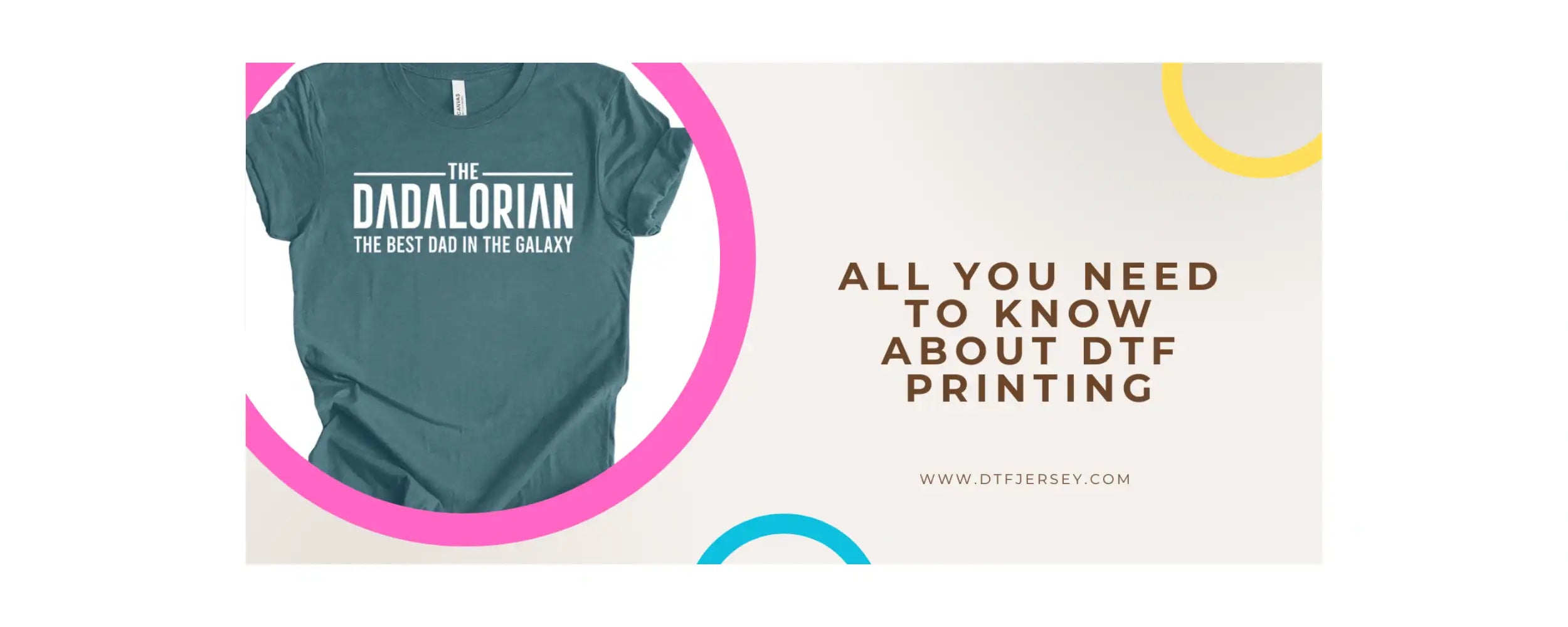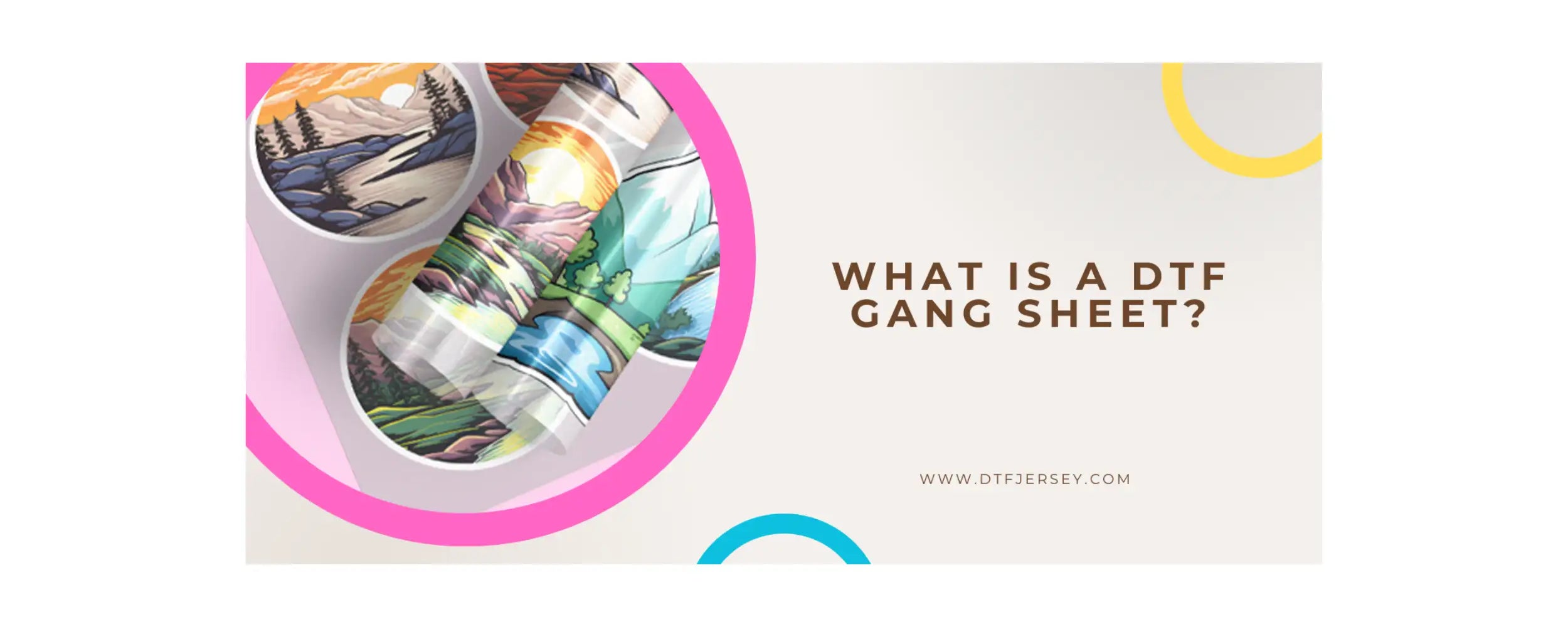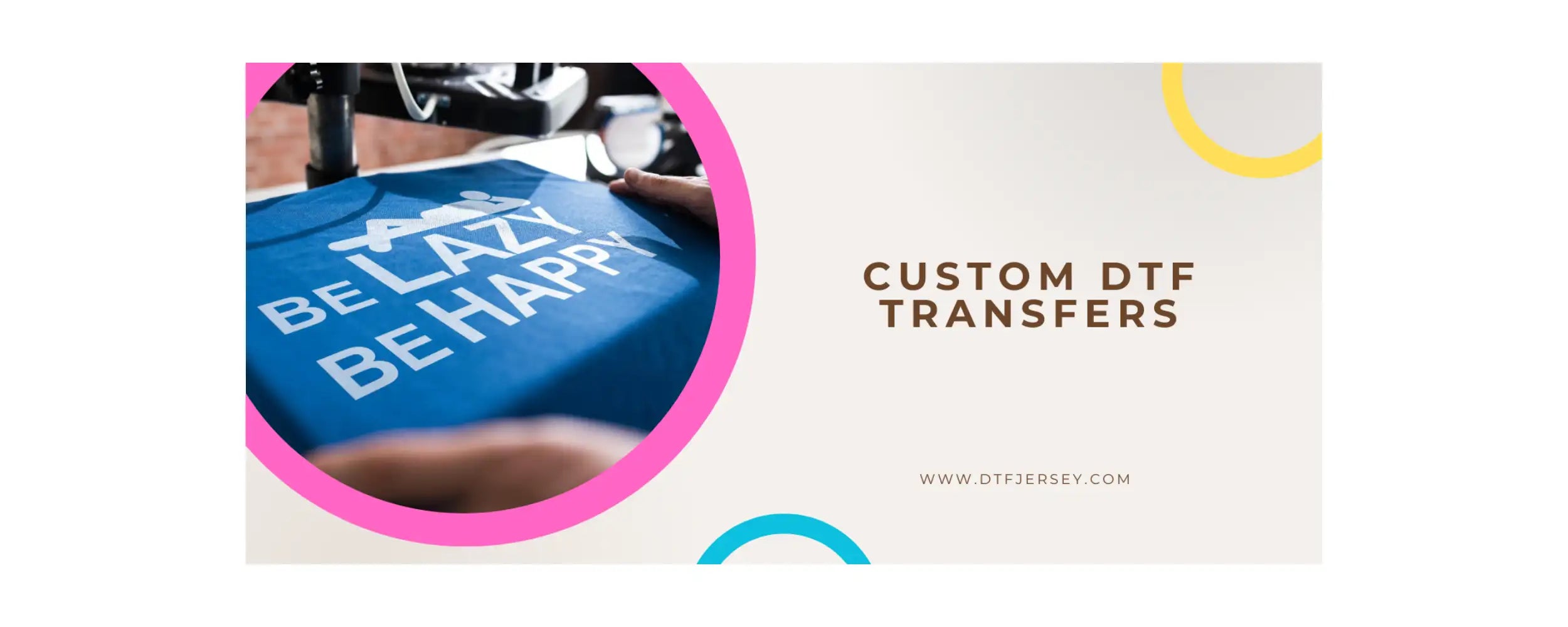
All You Need to Know About DTF Printing
DTF printing is a digital printing method used to directly transfer ink to a material or fabric using a special film layer. Companies use the DTF prints on custom designed t-shirts, shirts, sweatshirts, hoodies. Before going into a DTF prints business you need to know how it works, how it is different from prints like DTG, what fabric is fit for DTF, how to care for it, preserve and store it, and all other crucial details you need to know as a user or business owner.
What is DTF Printing ?
DTF printing is a custom printing process used to print digital custom prints to a fabric using a special film and heat transfer method. The process starts with you first printing your design onto a special PET film, then transferring it by heat onto fabric.
First, a DTF printing machine prints the design and a white ink layer. While the ink is still wet, you apply adhesive powder, then cure the film so the design sticks. Finally, you use a heat press to apply the film to clothes, peel it off, and press again briefly to make it last. It works on many fabrics like cotton, polyester, nylon, and blends without needing pretreatment. Each design is sharp, colorful, and long-lasting.
How is DTF Different From DTG Printing?
DTG prints ink directly onto fabric like a printer puts ink on paper, absorbing into fibers, it is best on cotton. DTF Printing, however, prints onto film first, which sits on top of fabric once transferred.
Here are the main differences:
DTF Printing:
- Prints the design on a film first, then transfers it to fabric with heat.
- Works on almost all fabric types: cotton, polyester, blends, nylon, etc.
- Uses adhesive powder to help the design stick to fabric.
- Better for vibrant colors and sharp details.
- Great for printing in bulk or small orders.
- Allows printing and saving later; prints can be stored before transfer.
- Slightly raised texture; not as soft as DTG.
- More durable on washing if applied and washed properly.
- Doesn’t need pre-treatment of fabric.
DTG Printing:
- Prints directly onto the fabric, like a regular inkjet printer.
- Best for 100% cotton or high-cotton blends.
- Doesn’t need adhesive; ink soaks into fabric.
- Feels softer and more natural to the touch.
- Great for photo-like designs on light fabrics.
- Requires pre-treatment for dark shirts or strong colors.
- Not ideal for synthetic materials like polyester.
- Not as good for long-term durability without special care.
- Printing must be done immediately; no storing designs.
What Types of Fabrics are Suitable for DTF Transfers?
DTF printing can be done on almost any fabric like cotton, polyester, nylon, denim, fleece, leather, and even blends. It is great for both light and dark colors. That wide compatibility makes DTF transfers much more flexible as compared to methods like DTG or sublimation, which are limited to certain fabrics.

Do I need a Special Printer for DTF Printing?
Yes, you need a DTF transfer printer or at least one modified with CMYK plus white ink specifically for DTF printing. Standard inkjet printers are capable of handling adhesive powder or special film and might get damaged after first use. You can use RIP, Raster Image Processor, software to produce the needed white underbase. features like white ink support, precise ink layering, and compatibility with DTF films.
Are DTF Prints Durable after Multiple Washes?
Yes. DTF prints bond tightly with the fabric due to adhesive powder. They resist fading, cracking, or peeling even after many washes as many as 50 to 100; especially when take good care of the prints; like you wash clothes inside-out, in cold water, and avoid hot dry settings and ironing on the prints, they will last longer.
Can I Use DTF Transfers on Dark Fabrics?
Yes you can use DTF transfers on dark fabrics because DTF adds a white under base which stands out well on your dark fabrics. The white beneath the colored ink keeps the design vivid, whatever the color of the shirt is.
What are the Advantages of DTF Over Screen Printing?
DTF is easier for small batches, it lets you print many colors or detailed designs without needing to have multiple screens, it works on many fabrics, and requires a smaller setup. Screen printing is supposed to cater to the need of production on large runs of simple designs but is not flexible or quick for small, colorful jobs. It is for printing on dark fabrics and is more cost effective due to high production capacity.
Get the full scoop on DTF vs. Screen Printing—check out our blog post now
Is DTF Printing Suitable For Detailed and Colorful Designs?
Yes, DTF printing excels at crisp, detailed photo-quality designs and smooth color gradients. The digital print and adhesive give high-resolution results that stay sharp and bright.
What Equipment Do I Need to Start DTF Printing?
To start DTF printing, you need to have the following setup to print, cure, film-transfer, peel, and post-press:
- A DTF printing machine or modified inkjet printer with CMYK+white
- PET DTF transfer film
- Adhesive powder
- RIP software
- A heat press machine or curing oven.
How Long Does a DTF Transfer Take to Apply?
It takes around 30 to 40 seconds per garment starting with design to final pre-press. First the printing takes some seconds, then curing film for a few seconds, now heat-press transferring for 15 to 20 seconds, peeling it, and then a quick re-press is all it takes.

Can I Create Custom Designs with DTF Printing?
Yes, you can create any design like PNGs, JPGs, etc. and print it onto film. You can even make custom DTF transfer designs at home or with a local shop. It is ideal for personal or small-business creative work, unlike other printing methods it does not require a large setup.
Is DTF Printing Cost-Effective for Small Orders?
Yes, DTF printing is very cost-effective for small orders. DTF has minimal setup costs compared to screen printing. It is great for one-off or small batch jobs. The materials are not expensive and there is no need for screens or pre-treatment.
Can I Use DTF Transfers on Non-textile Surfaces?
DTF printing method is designed for fabrics specifically. While some business owners get experimental with surfaces like wood or plastic, it is not reliable or common to practice. You must stick to textiles for best printing results.
How Should I Store Unused DTF Transfers?
To store unused DTF transfers, keep them flat in a cool, dry place out of sunlight. Avoid bending to avoid creases, and protect from heat, or moisture, or it could ruin the adhesive or adhesive layer. You must use releasable bags, silica packets, parchment paper, or plastic air tight bags to protect the transfers.
Is DTF Printing Eco-Friendly?
It uses water-based inks, and you don’t need chemicals for fabric pre-treatment, which is cleaner than some other methods. But it does use single‑use film and powder, so it may not be perfectly eco-friendly. But it is less messy than screen printing.
Common DTF Printing Problems and How to Fix Them
There are 6 common issue that with DTF printing, here is a list of issues with solution in the following:
Colors Look Dull or Washed Out
1. Check your ink levels and make sure you are using high-quality DTF ink
2. DTF transfer film must be clean and handled properly; no fingerprints or dust
3. Make sure the white ink under base is printed correctly
4. Adjust color settings in your RIP software for more vibrant output
Print Peels Off After Washing
1. Heat press the design at the correct temperature; usually around 300°F/150°C
2. Apply even pressure for 15 to 20 seconds and do a second press after peeling.
3. Let the print cool before peeling and avoid washing for 24 to 48 hours after pressing.
Powder Doesn’t Stick Well
1. Apply the adhesive powder evenly on the wet ink right after printing.
2. Shake off excess powder and avoid using powder that is old or clumpy.
3. Make sure the ink is not too dry before applying powder.
Ink Smudges on the Film
1. Check if your printer’s temperature or humidity settings are too high.
2. Allow each layer of ink to dry properly during the print process.
3. Avoid touching the printed film before curing.
Edges of Design Are Lifting
1. Check full, even heat and pressure during transfer.
2. Press again after peeling for 5 to 10 seconds to seal the edges.
3. Make sure no dust or wrinkles are under the film during transfer.
Film Sticks or Tears When Peeling
1. Let the garment cool before peeling the film off
2. If needed, lightly stretch the fabric to help release the film.
3. Use high-quality custom DTF transfer film designed for smooth peeling
Where Can I Buy DTF Transfers or Get Them Printed?
You can search on Google by typing “DTF prints near me” to look up local DTF print shops or using online services like DTF Jersey. They offer film printing and adhesive services you can ship to your home, or visit a nearby shop to get designs printed.


